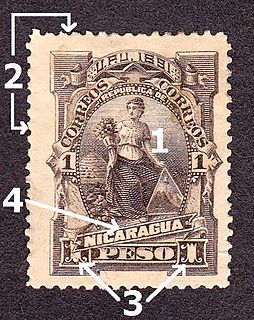
A postage stamp is a small piece of paper issued by a post office, postal administration, or other authorized vendors to customers who pay postage, who then affix the stamp to the face or address-side of any item of mail—an envelope or other postal cover —that they wish to send. The item is then processed by the postal system, where a postmark or cancellation mark—in modern usage indicating date and point of origin of mailing—is applied to the stamp and its left and right sides to prevent its reuse. The item is then delivered to its addressee.

The postal and philatelic history of Canada concerns postage of the territories which have formed Canada. Before Canadian confederation, the colonies of British Columbia and Vancouver Island, Prince Edward Island, Nova Scotia, New Brunswick and Newfoundland issued stamps in their own names. The postal history falls into four major periods: French control (1604–1763), British control (1763–1841), colonial government control (1841–1867), and Canada, since 1867.
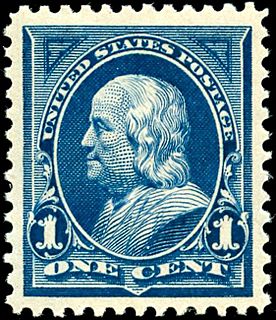
The history of postal service of the United States began with the delivery of stampless letters, whose cost was borne by the receiving person, later also encompassed pre-paid letters carried by private mail carriers and provisional post offices, and culminated in a system of universal prepayment that required all letters to bear nationally issued adhesive postage stamps.

Indian postal systems for efficient military and governmental communications had developed long before the arrival of Europeans. When the Portuguese, Dutch, French, Danish and British conquered the Marathas who had already defeated the Mughals, their postal systems existed alongside those of many somewhat independent states. The British East India Company gradually annexed the other powers on the sub-continent and brought into existence a British administrative system over most of modern-day India, with a need to establish and maintain both official and commercial mail systems.
This is a partial timeline of significant events in postal history, including dates and events relating to postage stamps.
This is a list of philatelic topics.

Postage stamps and postal history of Great Britain surveys postal history from the United Kingdom and the postage stamps issued by that country and its various historical territories until the present day.

The postage stamps and postal system of the Confederate States of America carried the mail of the Confederacy for a brief period in American history. Early in 1861 when South Carolina no longer considered itself part of the Union and demanded that the U.S. Army abandon Fort Sumter, plans for a Confederate postal system were already underway. Indeed, the Confederate Post office was established on February 21, 1861; and it was not until April 12 that the American Civil War officially began, when the Confederate Army fired upon US soldiers who had refused to abandon the fort. However, the United States Post Office Department continued to handle the mail of the seceded states as usual during the first weeks of the war. It was not until June 1 that the Confederate Post office took over collection and delivery, now faced with the task of providing postage stamps and mail services for its citizens.
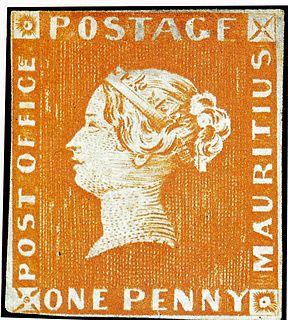
The Mauritius "Post Office" stamps were issued by the British Colony Mauritius in September 1847, in two denominations: an orange-red one penny (1d) and a deep blue two pence (2d). Their name comes from the wording on the stamps reading "Post Office", which was soon changed in the next issue to "Post Paid". They are among the rarest postage stamps in the world.
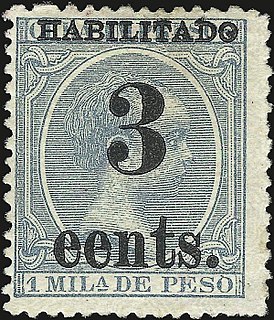
Linn's World Stamp Almanac defines a provisional stamp as "a postage stamp issued for temporary use to meet postal demands until new or regular stocks of stamps can be obtained."

U.S. Special Delivery was a postal service paid for with additional postage for urgent letters and postal packets which are delivered in less time than by standard or first class mail service. Its meaning is different and separate from express mail delivery service. Essentially it meant that a postal packet was delivered from a post office to the addressee immediately once it arrived at the post office responsible for delivering it, rather than waiting for the next regular delivery to the addressee.

Official mail is mail sent from, or by, an authorized department of government, governmental agency or international organization and normally has some indication that it is official; a certifying cachet, return address or other means of identity, indicating its user. In some countries, postage stamps have been issued specifically for official mail.
The Stamp Specialist is the title of a series of books on philatelic research written and edited for the advanced collector of postage stamps.

Presidents of the United States have frequently appeared on U.S. postage stamps since the mid-19th century. The United States Post Office Department released its first two postage stamps in 1847, featuring George Washington on one, and Benjamin Franklin on the other. The advent of presidents on postage stamps has been definitive to U.S. postage stamp design since the first issues were released and set the precedent that U.S. stamp designs would follow for many generations.
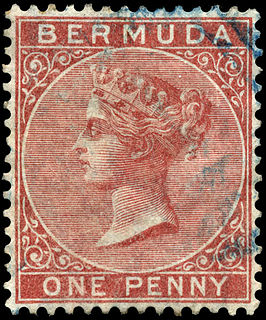
Bermuda, a group of islands in the North Atlantic Ocean, was previously uninhabited when the British established a settlement in 1612.
Henry Thomas Windsor was the owner of "The City Despatch Post Company" of New York which issued the first Stamp in the USA. A black/grey three cent stamp depicting the head of George Washington.

The St. Louis Bears are a set of Provisional stamps issued by the St. Louis Post office in 1845-46 to facilitate prepayment of postal fees at a time when the United States Post Office had not yet issued postage stamps for national use. St. Louis, whose postmaster, John M. Wimer, instigated the production, was one of eleven cities to produce such stamps. Bears were offered in three denominations: 5¢, 10¢ and 20¢; the earliest known postmark date on a stamp of the issue is November 13, 1845.

The Alexandria "Blue Boy" is a very rare stamp. It takes its name from the feature that makes it unique: its color. One of the few surviving stamps from a rare issue—the Postmaster's Provisionals produced in Alexandria, D.C., beginning in 1846, only seven of which are known—the Blue Boy is the sole example printed on blue paper. Postally used, the Blue Boy remains affixed to its original envelope, which last sold in 2019 and still holds the record for the highest priced cover of United States philately.
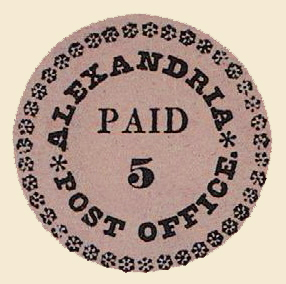
In the Act of March 3, 1845, the United States Congress standardized postal rates throughout the nation at 5¢ for a normal-weight letter transported up to 300 miles and 10¢ for a letter transported between 300 and 3,000 miles, with these rates to take effect on July 1, 1845.

The U.S. Parcel Post stamps of 1912–13 were the first such stamps issued by the U.S. Post Office Department and consisted of twelve denominations to pay the postage on parcels weighing 16 ounces and more, with each denomination printed in the same color of "carmine-rose". Their border design was similar while each denomination of stamp bore its own distinctive image in the center (vignette). Unlike regular postage items, whose rates were determined by weight in ounces, Parcel Post rates were determined and measured by increments in pounds. The new stamps were soon widely used by industry, farmers and others who lived in rural areas. Partly owing to some confusion involving their usage, their exclusive use as Parcel Post stamps proved short lived, as regular postage stamps were soon allowed to be used to pay parcel postage rates.

















